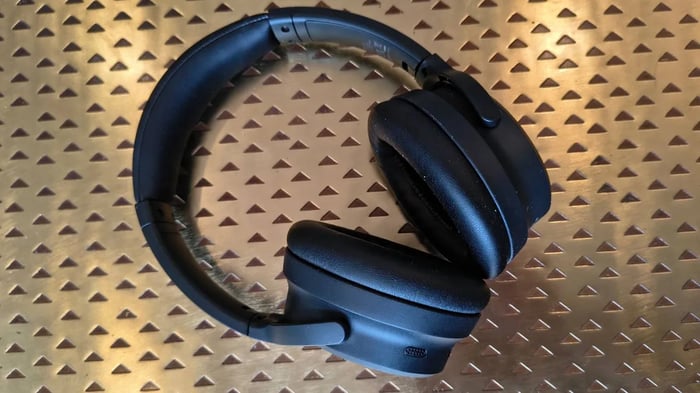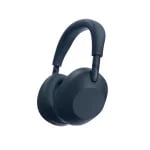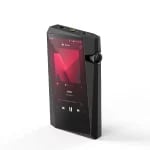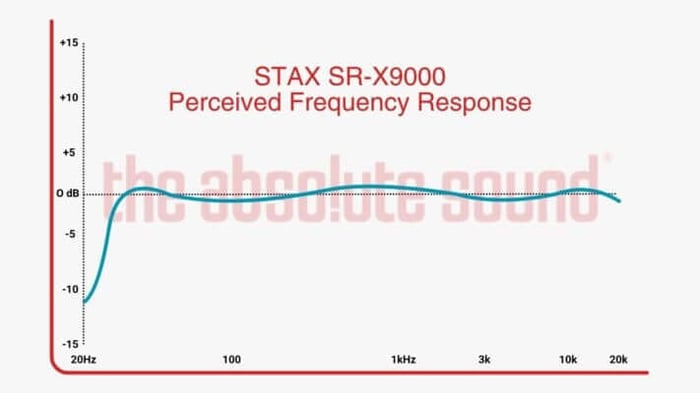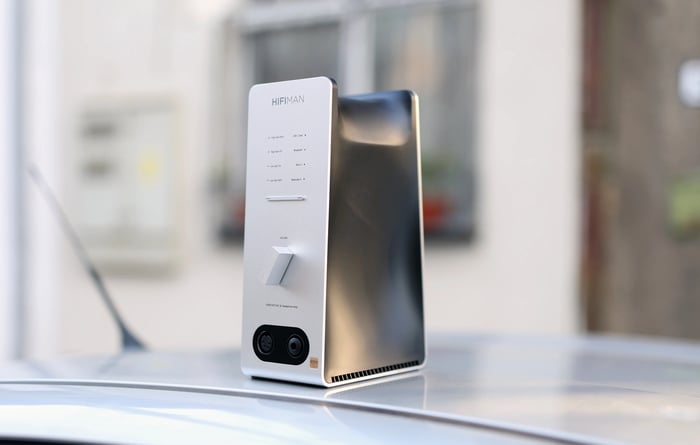
HIFIMAN EF600 Review: Masterful R2R Music DAC & Headphone Amplifier
HIFIMAN EF600 Review: Masterful R2R Music DAC & Headphone Amplifier
Experience unmatched musical clarity and power with the HIFIMAN EF600 R2R DAC and headphone amplifier, designed for audiophiles seeking top-tier sound.
Introducing the HIFIMAN EF600: A High-End R2R DAC and Headphone Amplifier
The HIFIMAN EF600 is a premium desktop DAC and headphone amplifier priced at around $850, boasting a sleek vertical design. It features the proprietary Himalaya Ladder DAC modules with R2R technology, engineered for optimal performance and space-saving on your desk. In this review, we’ll explore how it stands against other high-end desktop DAC/amps such as the Aune S9C PRO, FiiO K9 PRO ESS, Matrix Mini-i PRO 4, and the HIFIMAN EF40.
HIFIMAN aimed to break the mold with this new series by avoiding traditional DAC chips and instead employing an R2R DAC array using their in-house Himalaya chips. This design is not new but remains controversial because it demands significant investment in R&D to surpass conventional Delta-Sigma DACs. However, when executed properly, R2R technology delivers a far more musical, smooth, and natural sound.
Currently, the EF600 is not the company’s flagship model; that title awaits the upcoming Serenade. Regardless, EF600 stands out as one of the most versatile DACs available today, offering an impressive array of inputs and headphone power.
HIFIMAN EF600: Build Quality and Design

The EF600 introduces a new desktop DAC/amp concept called the Tower. This design is perfect if you have limited desk space or want a compact unit you can place beside a small screen. Its unique layout includes a toroidal transformer at the base, which facilitates natural heat dissipation via ventilation slots, negating the need for noisy fans.
The EF600's only design rival in shape considered before was the Smyth A16, but EF600 is heavier with significantly more power under the hood.
Inside the Machine
The EF600 features a fully balanced Dual Mono headphone amplifier architecture. Its DAC comprises Dual Himalaya PRO chips with an exceptional signal-to-noise ratio of 118 dB and channel separation of 131 dB. The headphone output power is astonishing: 2×5.12 W per channel at 32 ohms balanced, and 2×1.8 W per channel at 32 ohms unbalanced. Total harmonic distortion is incredibly low at 0.0014% for the line output at -8 dB.
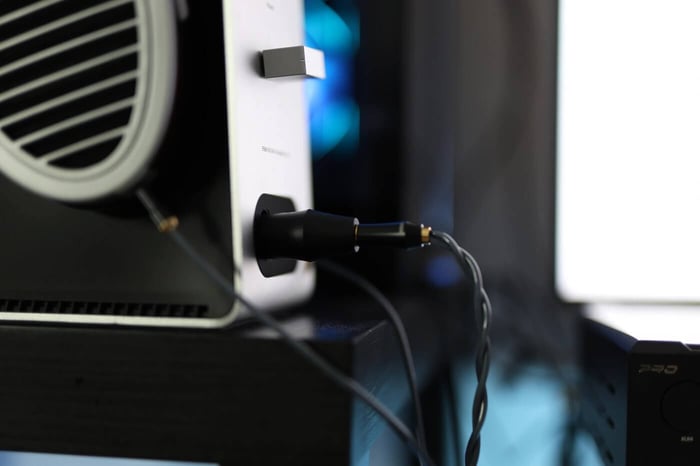
Inputs and Connectivity
- USB Type-B and USB Type-C (not simultaneous, choose one)
- Coaxial digital input
- Balanced XLR input
- Unbalanced RCA input
- Bluetooth with LDAC, aptX, AAC, and SBC codecs
The EF600 handles PCM up to 32-bit/192 kHz and DSD up to DSD256. USB inputs operate with zero latency, assuring perfect sync with video or gaming content.
Cooling and Form Factor
With its toroidal transformer wound with oxygen-free copper, the EF600 doubles as a sturdy headphone stand. The front and back panels extend slightly more than the center, creating a natural resting place for headphones.
Line Outputs and Noise
Two line outputs are available: unbalanced RCA and balanced 3-pin XLR. Both output at constant full volume and are not preamp outputs. The EF600 is somewhat sensitive to electromagnetic interference—placing it near powerful GPUs, routers, or crowded power strips may cause a faint background hum. Using a power filter or physical isolation can reduce this noise. Notably, this does not affect headphone output, which remains whisper-quiet.
Headphone Compatibility and Volume Control
Though exact output impedance isn’t specified, the EF600 is designed to power demanding headphones like HIFIMAN HE1000SE, Audivina, iBasso SR3, Sivga Luan, Sennheiser HD 660S2, Meze 109 PRO, Dan Clark Aeon 2 Noire, and Audeze LCD-5 with aplomb. Its output power exceeds the needs of these headphones, and it even provides a Low Gain mode for fine volume adjustments.
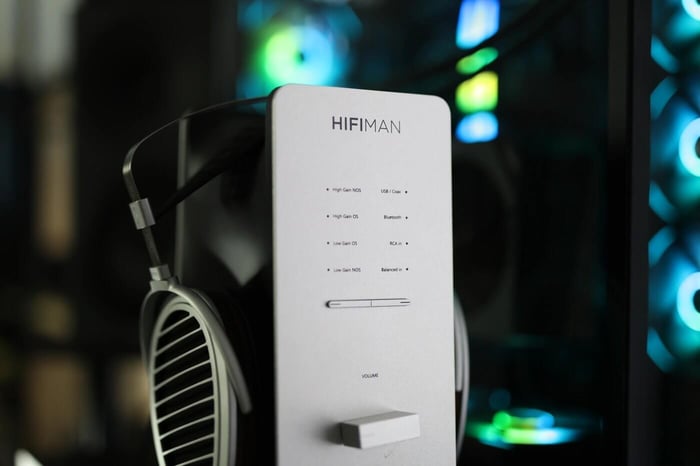
High gain makes headphones like the LCD-5 loud enough by 12 o’clock on the volume dial. For IEMs, however, the volume can be too high even at low gain, as the EF600 isn’t optimized for in-ear monitors.
Oversampling Options
Two sound modes are offered:
- OS (Oversampling) mode applies digital filtering, producing crisper, brighter, and more aggressive highs with vivid dynamics.
- NOS (Non-Oversampling) mode disables the filter, resulting in a softer, warmer, and more laid-back sound with smoother attacks and transitions.
Personal listening tests with HIFIMAN HE1000SE showed NOS mode paired with LavriCables Master Silver cables delivers a warm, organic tone, while OS mode with default or ddHIFI BC150B cables offers a more dynamic, energetic experience.
Though some argue the NOS mode is the main benefit of R2R DACs, the EF600’s OS mode still offers a uniquely engaging and musical experience compared to standard Delta-Sigma DACs.
Flexible Headphone Outputs
The EF600 provides:
- Balanced headphone output (XLR)
- Unbalanced 6.3mm headphone output
You can plug in both simultaneously without affecting sound quality, though this feature might be superfluous for many users.
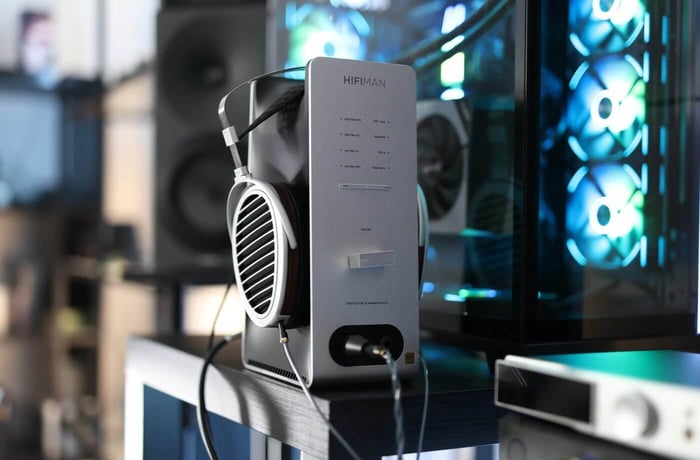
Testing with a Wide Range of Headphones and IEMs
The EF600 was tested with multiple headphones including:
- HIFIMAN HE1000SE, Audivina, Arya Organic
- iBasso SR3
- Audeze LCD-5, LCD-XC, MM-500
- Sivga Peacock
- Sendy Audio Apollo
- Sennheiser HD 660S2
- Avantone PRO Planar
As for IEMs, the list includes:
- Fir Audio VxV
- HIFIMAN Svanar
- iBasso IT05
- Soundz Avant
- Sennheiser IE900
The EF600 was used as a reference DAC for several months, handling numerous reviews with consistency and reliability.
HIFIMAN EF600 Sound Quality
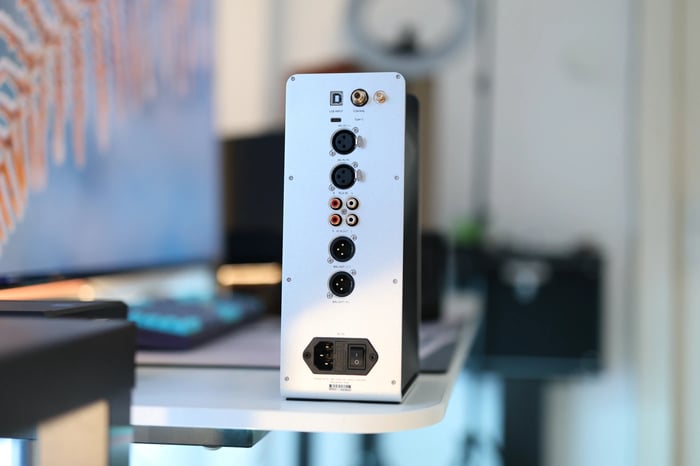
When powering large headphones, the EF600 offers ample power, impactful bass, and precise control. It can effortlessly reproduce the nuances of every headphone tested. The sound character is dynamic yet organic—whether you prefer the brighter, more aggressive OS mode or the laid-back, warm NOS mode, the EF600 shines.
Compared to other DAC/amps under $1,000, the EF600 stands out for its emotion and expressiveness, possessing a warmth in the midrange and brilliance in the highs without sacrificing control.
Bass Performance
- Deep, clean, and rounded bass with a gentle warmth in the mid-bass region.
- Natural decay on musical notes with good extension into sub-bass.
- Handles varying impedance headphones without distortion.
- NOS mode provides softer, calmer bass, while OS mode delivers tighter, more aggressive lows.
Midrange and Soundstage
- Organic and smooth mids, natural sounding with pleasant transitions.
- Wide, deep, and holographic soundstage with excellent instrument separation.
- Fine details are revealed easily, enhancing genres like rock, metal, shoegaze, EDM, and J-Pop.
- Vocals sound natural, neither pushed forward nor recessed.
High Frequencies
HIFIMAN expertly delivers colorful, airy highs. The EF600 partners beautifully with HE1000SE headphones, either showcasing sparkling highs in OS mode or softening them in NOS mode for a more forgiving listen.
The highs remain clear and detailed even at high volumes, avoiding listener fatigue. This DAC/amp combo brings live concert vibes right into your listening space.

Comparisons with Other High-End DAC/Amps
EF600 vs Matrix Mini-i PRO 4
Matrix Mini-i PRO 4 is pricier and more of a multi-functional streamer/DAC/preamp. Mini-i PRO 4’s output options include balanced 4.4mm and unbalanced 6.3mm; EF600 uses XLR balanced and 6.3mm unbalanced.
Mini-i PRO 4 targets both IEMs and full-sized headphones; EF600 emphasizes power for demanding headphones. Mini-i PRO 4 sounds warmer and smoother; EF600 is more neutral, detailed, and holographic.
For IEM users, Mini-i PRO 4 may be preferred; for full-sized headphones, EF600 offers better depth and resolution.

EF600 vs HIFIMAN EF400
EF400 offers more volume control options and lower background noise for IEMs. EF600 delivers more power, wider dynamic range, better resolution, and more vivid sound.
EF600 produces more colorful midrange and deeper, fuller lows. Both share R2R DAC tech and NOS/OS modes.
EF600 is technically and musically superior for demanding headphones.
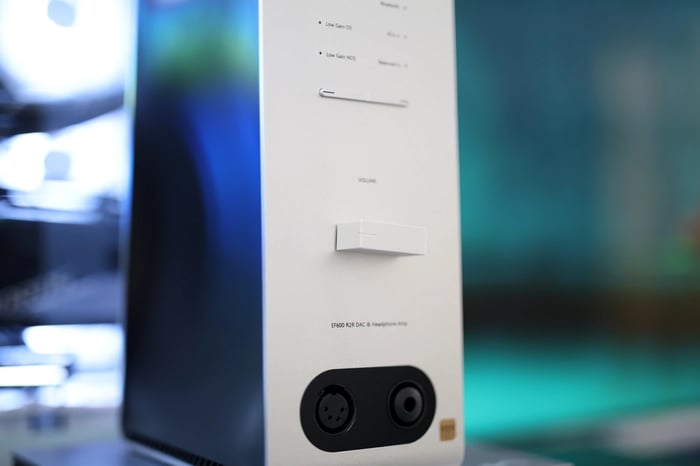
EF600 vs FiiO K9 PRO ESS
Both have solid builds; EF600 is tall and serves as a headphone stand. EF600 has more power and runs cooler than K9 PRO ESS.
EF600 sounds wider, more spacious, dynamic, and warmer in mids and bass. K9 PRO ESS is flatter, making it ideal for studio use.
EF600 better suits demanding headphones, offering higher resolution and brighter highs.
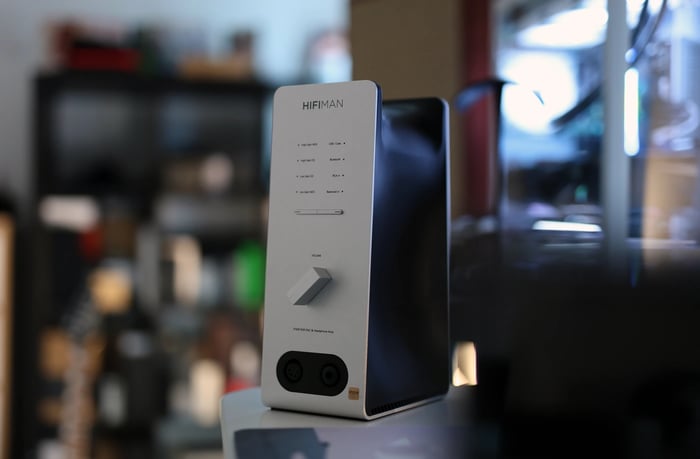
EF600 vs Aune S9c PRO
EF600 doubles as a headphone stand; S9C PRO has a traditional desktop design. EF600 stays cooler; S9C PRO tends to heat more.
EF600 has higher output power for challenging headphones. S9C PRO has volume control and lower noise, better for IEMs.
EF600 sounds more dynamic and detailed; S9C PRO warmer and smoother. EF600 preferred for high-impedance and larger headphones; S9C PRO better for IEMs.
READ THE FULL REVIEW OF AUNE S9C PRO REFERENCE
Value and Final Thoughts on the HIFIMAN EF600
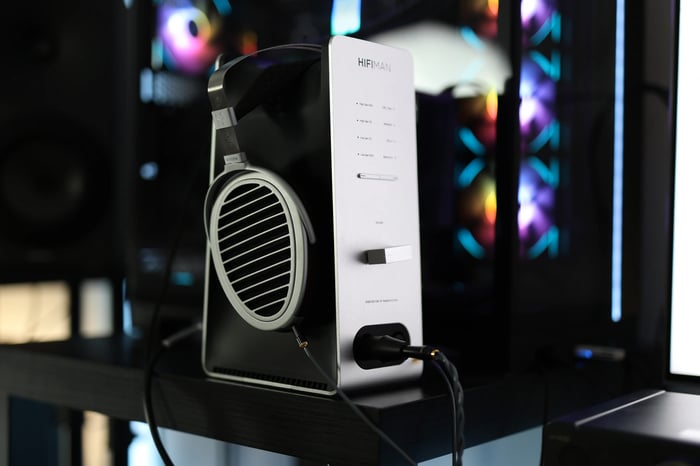
Among the many high-end desktop DAC/amps, the HIFIMAN EF600 shines with its exceptional price-to-performance ratio. Its headphone power, DAC decoding prowess, and thoughtful design make it a standout choice.
While a preamp may be necessary for full integration into desktop stereo rigs, the EF600 brings a magical touch to sound reproduction that’s priceless for headphone lovers.
The EF600 rightfully earns a place in the audiophile hall of fame as one of the most dynamic, powerful, and detailed DAC/amps in its price range.
If you want a DAC/amp that balances incredible power, build quality, and organic sound, especially if you own HIFIMAN headphones, the EF600 should be at the top of your list.
FAQs About HIFIMAN EF600
- How much power does the EF600 deliver to headphones?
It outputs 2×5.12 W per channel at 32 ohms balanced and 2×1.8 W at 32 ohms unbalanced, enough for very demanding headphones. - Can I use EF600 with in-ear monitors (IEMs)?
EF600 isn’t optimized for IEMs; its volume control may be too coarse, causing high loudness even at low gain. - What digital inputs are available on the EF600?
USB Type-B, USB Type-C, coaxial, balanced XLR, RCA, and Bluetooth with LDAC, aptX, AAC, and SBC support. - What’s the difference between OS and NOS modes?
OS (Oversampling) mode applies digital filters for brighter, more aggressive sound; NOS (Non-Oversampling) mode disables filters for a warmer, smoother sound. - Is the EF600 suitable for large high-impedance headphones?
Absolutely. It excels at driving demanding headphones like HIFIMAN HE1000SE, Audeze LCD-5, and others with ample power and control.
Elevate your listening experience—shop your favorite album cover posters and more at our store.
 | DISCOUNTGET 30% OFF*Use code on your next order:
|
* This post may contain affiliate links, meaning we earn a commission if you make a purchase through these links, at no additional cost to you.




